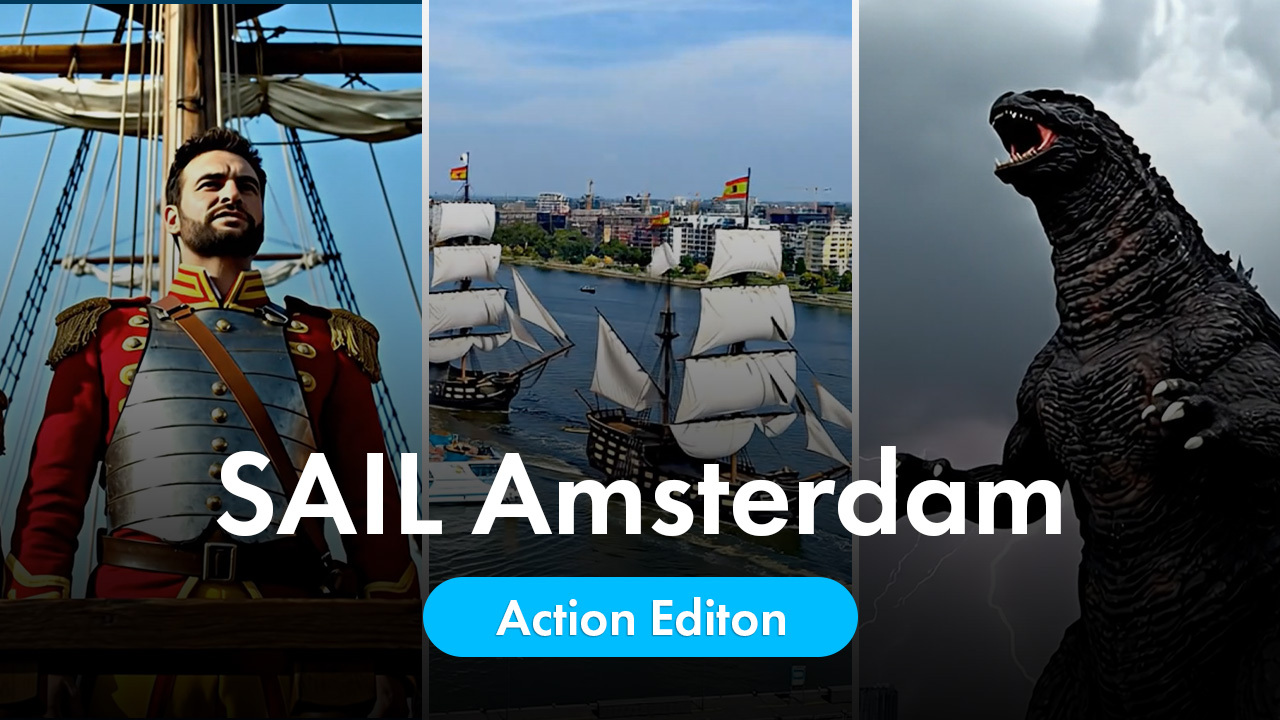Every five years, Amsterdam transforms into a spectacular maritime stage, hosting one of the world’s largest nautical celebrations. Majestic tall ships sail in alongside sleek modern vessels, while more than two million visitors gather for the rare chance to witness them up close. The tradition began in 1975, when the city marked the 700th anniversary of its founding—and discovered a new way to celebrate its centuries-old bond with the sea.
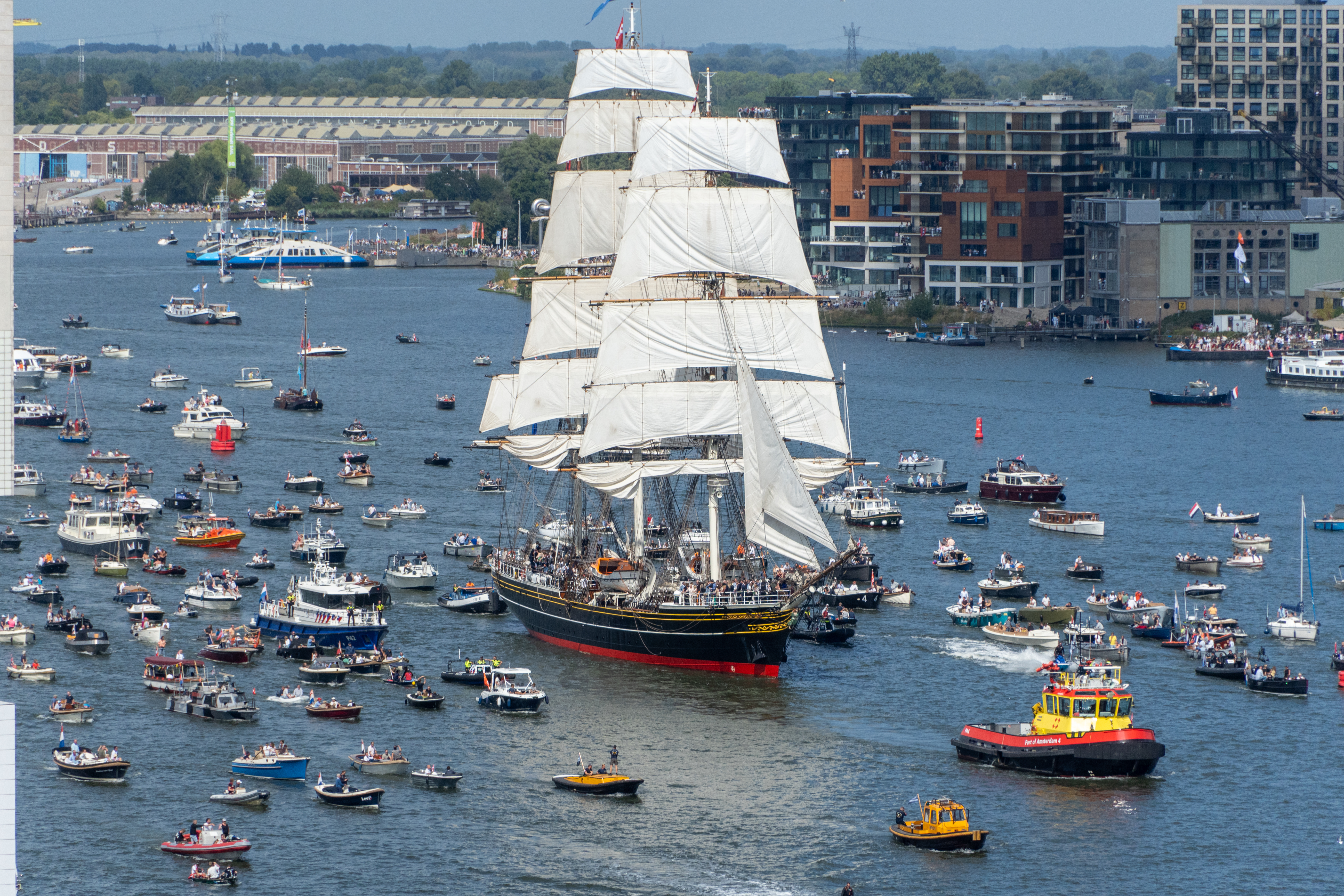
Especially for the event and guests, we’ve made a fun video imagining an alternative SAIL, one where the Spanish arrive too late and find the city wide open, with a slight japanese twist in the end 😂
Our office enjoys a prime waterfront position, offering what is probably the best view in town. We plan to celebrate with a lively party among our guests, especially since we didn’t participate in Canal Pride this year. Our building also hosts the harbour master’s office upstairs and has a fun history, it was inaugurated in 1955 by the Dutch queen, and there’s a delightfully quirky video seen today.
Gay Life at Sea
Life on board could be rough, cramped, and dangerously monotonous, but also strangely liberating. For weeks or months, hundreds of men shared the same deck, hammocks strung shoulder-to-shoulder, with nowhere to go and no women on board. Bonds formed quickly, sometimes turning into discreet sexual relationships.
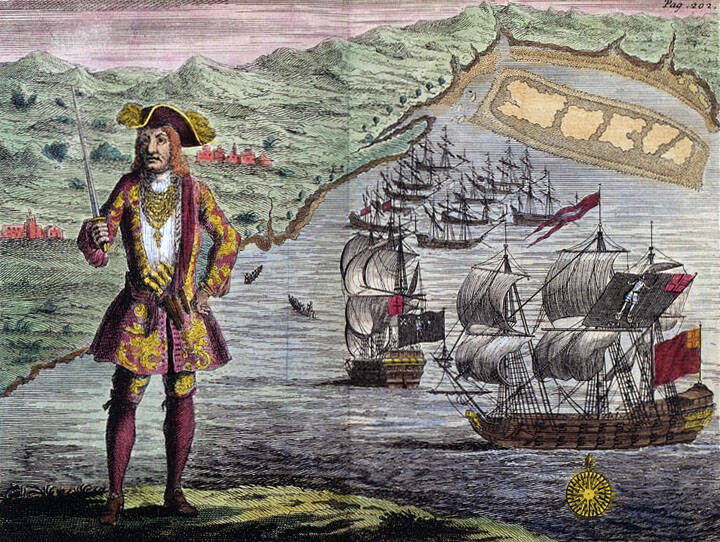
Captain Bartholomew Roberts was said to have had a violent encounter with a crew member and his matelot.
Among pirates and merchant crews, the practice of matelotage, a partnership between two men who shared everything from food to fortunes, was common, and often came with a level of intimacy that went far beyond friendship. Sailors developed their own codes and slang to talk about these encounters without tipping off officers, and on long voyages, such liaisons became an open secret.
The Golden Age of Sailing
After independence from Spain, In the early 17th century, this small city transformed itself into the dominating power of global trade. Amsterdam became the birthplace of modern capitalism, and this economic boom funded an explosion of art, culture, and architecture.
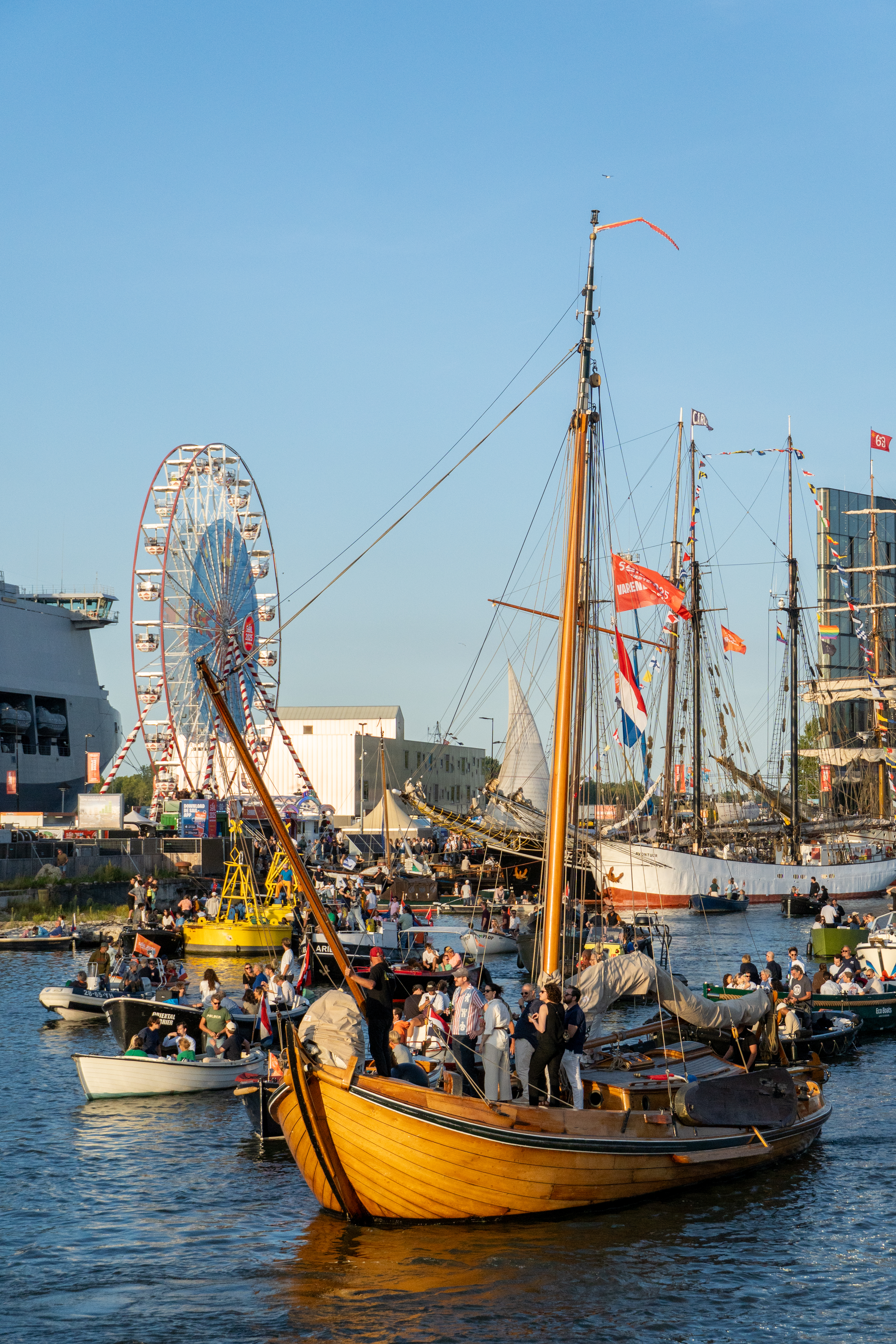
Wealthy merchants built the elegant canal houses that still make Amsterdam famous today.
The Golden Age, however, also had a darker side. Dutch ships carried not only spices and luxury goods but also played a central role in the transatlantic slave trade. The same maritime power that brought prosperity to Amsterdam also brought suffering to millions.
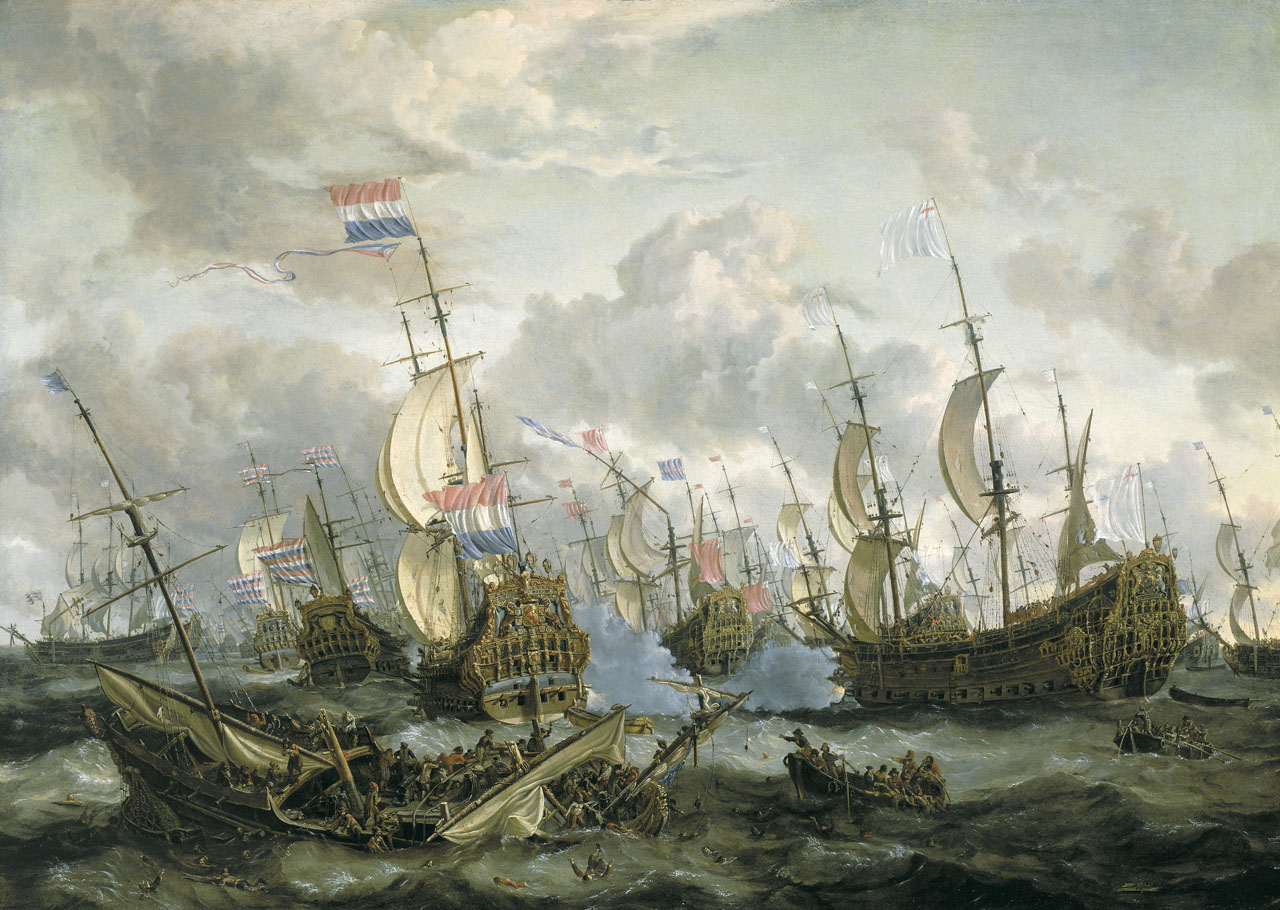
The Four Days’ Battle, 1666. We took this as inspiration for our little AI video in the end 😀
By the early 19th century, it was the British Empire that led the movement to abolish the slave trade. Through naval power and diplomacy, they pressured nations worldwide to end this brutal practice. But already The famous tulip crash, the first stock market crisis in history, marked the beginning of Amsterdam’s decline.
Our SAIL Office Party
With our prime location right on the waterfront, there’s no better place to experience SAIL Amsterdam than from our own office. Around 300 guests from the Dutch rainbow industry joined us for an evening.
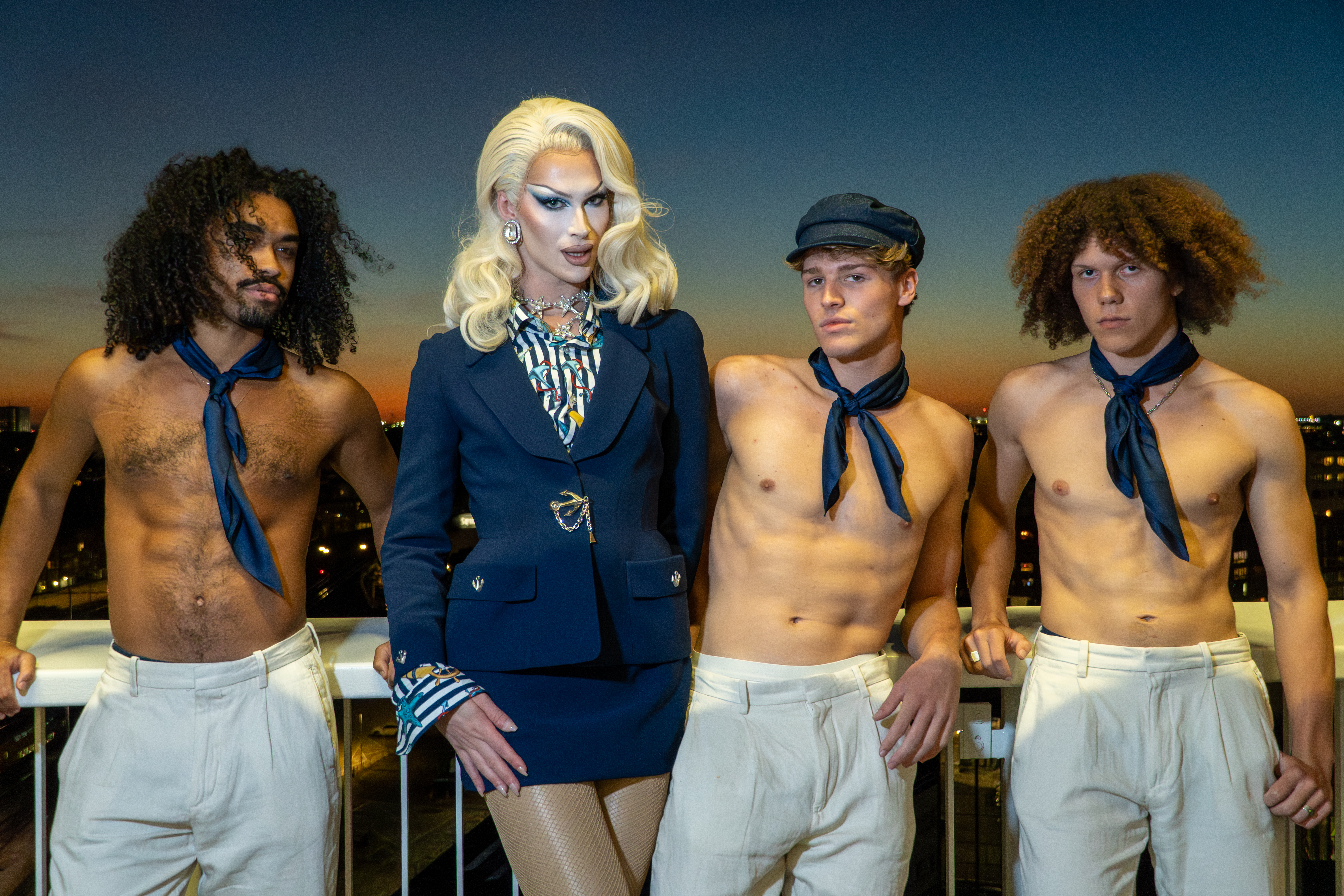
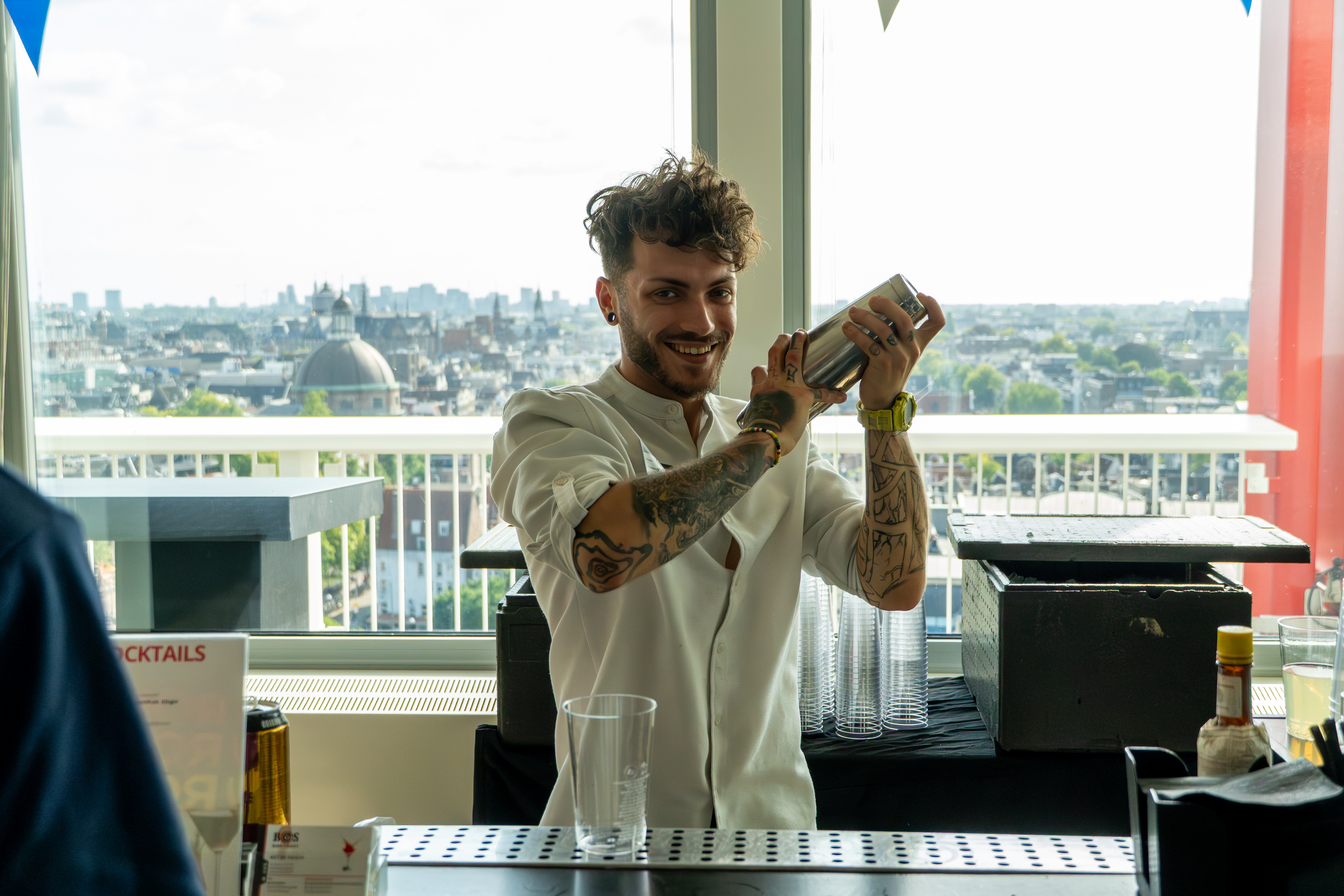
This gathering isn’t just about fun and the stunning parade on the water, it’s also about bringing our rainbow community together to connect, exchange ideas, and strengthen the bonds that keep it thriving.
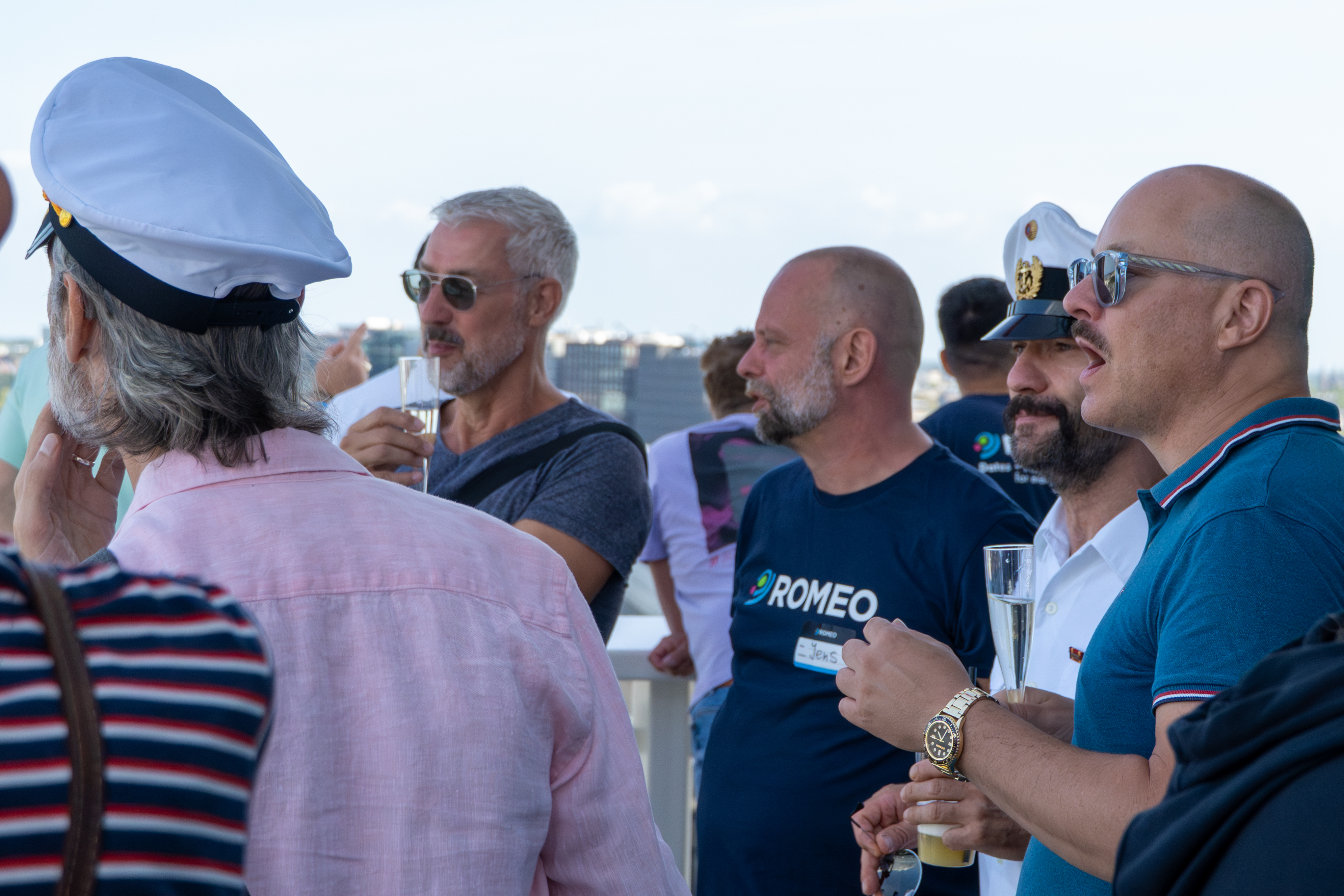
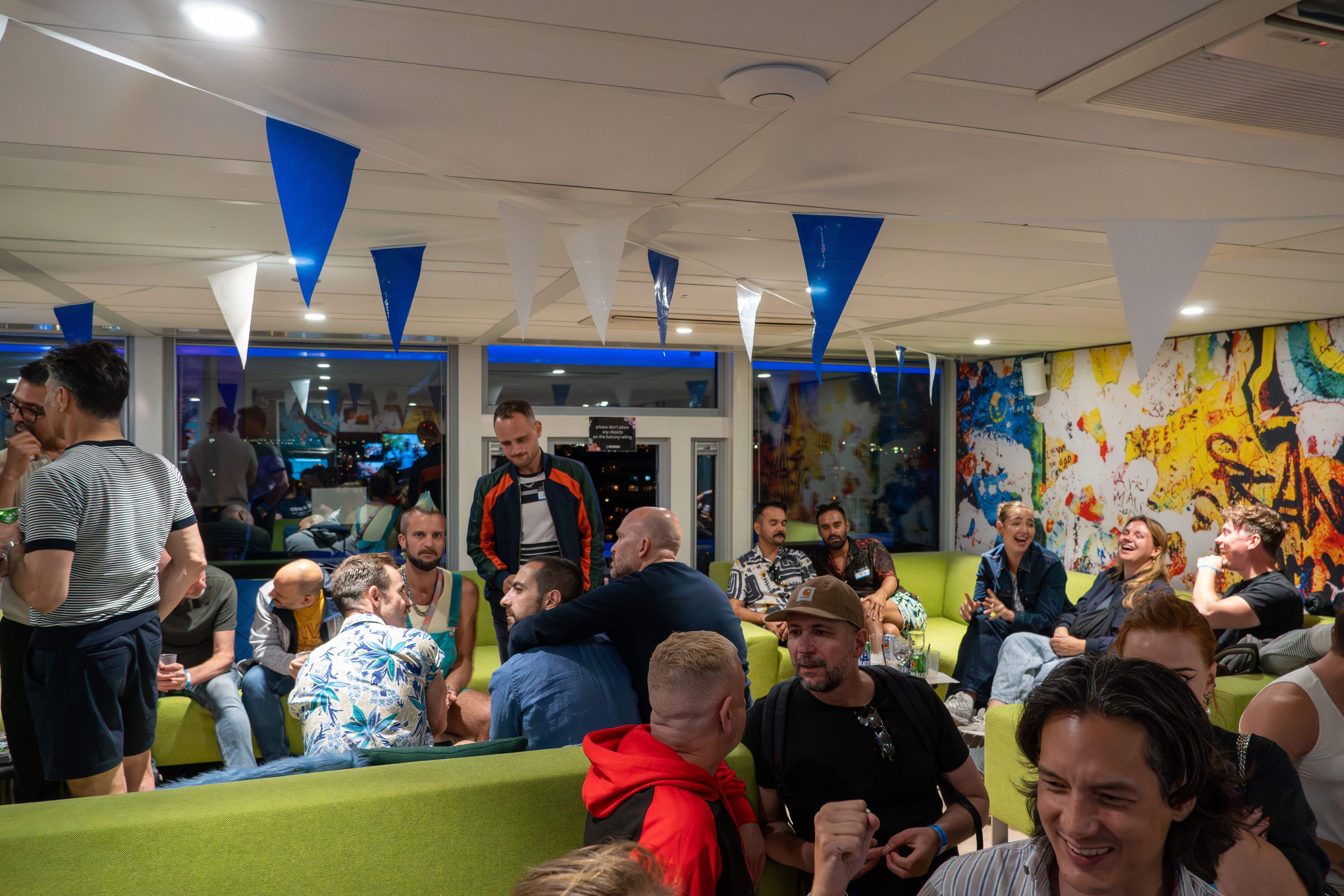
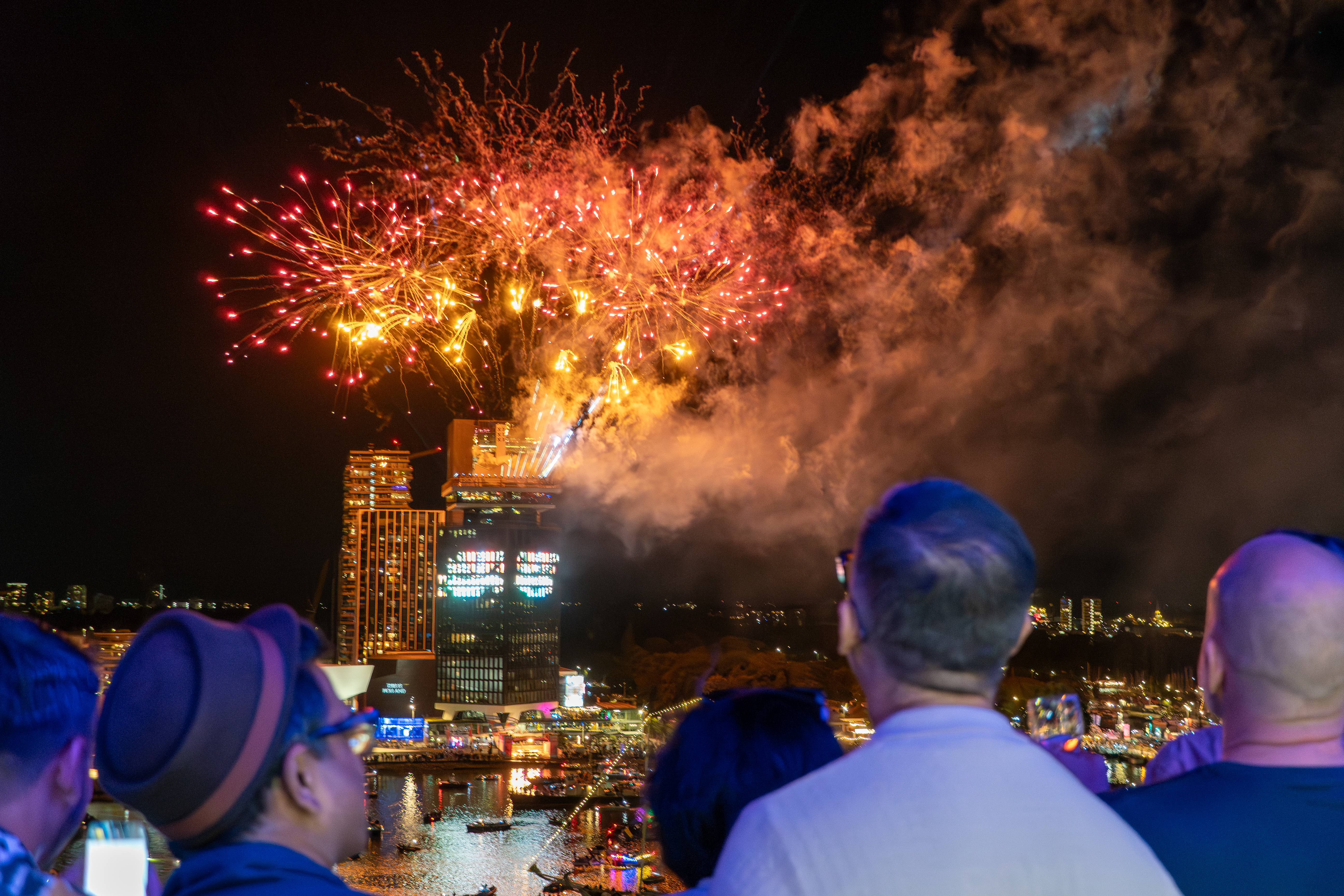
Wherever you are, you never know when a sailor might pass by, maybe not with a tall ship, but with the same spirit of adventure, freedom, and desire. Like sailors and pirates of old, we’re all on our own voyages for friends, dates, and love. When the right ship appears, be ready to climb aboard.
Your Romeo Sailors


